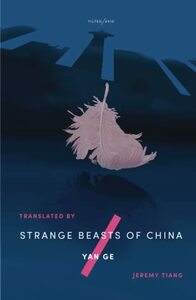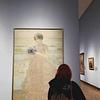You need to sign in or sign up before continuing.
Take a photo of a barcode or cover
inspiring
mysterious
reflective
slow-paced
Plot or Character Driven:
Plot
Strong character development:
Complicated
Loveable characters:
Yes
Flaws of characters a main focus:
Yes
challenging
reflective
sad
slow-paced
Plot or Character Driven:
Character
Strong character development:
Complicated
Loveable characters:
Complicated
Diverse cast of characters:
No
Flaws of characters a main focus:
Yes
emotional
mysterious
reflective
sad
fast-paced
Plot or Character Driven:
A mix
dark
funny
hopeful
reflective
sad
medium-paced
Plot or Character Driven:
A mix
Strong character development:
Complicated
Loveable characters:
Complicated
Diverse cast of characters:
Complicated
Flaws of characters a main focus:
Yes
It was hard to wrap my head around this book. It would, in turns, irritate and delight me. Stylistically it’s just so different. There are leaps of logic, and strange shifts that can either be delightful or just plain confusing. But I’m glad I stuck with it, because while the particulars could be inscrutable, the full effect was pretty magical and interesting.
Intellectually, I understand why this book has been blurbed as 'part-detective story', and factually speaking it's not entirely incorrect.
- The noir detective-esque first person narrator
- The investigative bent in each episodic chapter, which reveals the secret truth about each featured beast
- An overarching secret is slowly revealed, peeling back a web of secrets to unearth the truth at the heart of Yong'an City
However, I'm not certain I entirely like it as a description of Strange Beasts of China.
I'll address the translation first. I went into this book without knowing anything about it aside from the blurb. As a Chinese diaspora reader who is reasonably but not extensively informed about Chinese classics, I immediately picked up on the allusions to The Classic of Mountains and Seas (Shanhaijing) in the opening paragraphs of every chapter because the style of its Classical Chinese phrasing is distinct, even in translation.
From Howard Goldblatt's Introduction to [b:Fantastic Creatures of the Mountains and Seas: A Chinese Classic|54303573|Fantastic Creatures of the Mountains and Seas A Chinese Classic|Anonymous|https://i.gr-assets.com/images/S/compressed.photo.goodreads.com/books/1611497597l/54303573._SX50_.jpg|84736899]
What I did not know until I read other reviews is that parts of the rest of the book is written in Sichuanese dialect - I do not know to what extent. I wonder if some of the disconnect I felt towards the characters, whose actions and exaggerations felt at odds sometimes with the language choices of the translation or distanced in a way that I'm not entirely certain was intended in the original, would have benefited from a more slangy translation that would have given more of an immediate familiarity to the narration. The team that worked on this translation made the choice to signpost the change in formal register less obviously, perhaps to prioritise in plainer speech the meaning of what must have been a difficult text to translate, but I do wonder how a stronger contrast of register would have changed my initial reading.
Learning that these stories were originally published as serial fiction has also impacted my reading.
Last year at a friend's recommendation, I zipped through Aoko Matsuda's [b:Where the Wild Ladies Are|51168664|Where the Wild Ladies Are|Aoko Matsuda|https://i.gr-assets.com/images/S/compressed.photo.goodreads.com/books/1586814262l/51168664._SX50_.jpg|73120737] (translated by Polly Barton), which has some superficial similarities in depicting creatures from mythology living amongst humans in a contemporary East Asian society, using an episodic format to build a world out of loosely connected short stories. In terms of mode, mood, and message, both books are preoccupied with different things - Where the Wild Ladies Are explores an inexorable call to find meaning in the wonder of life with a more optimistic tone and a gentle sense of caustic humour, whereas Strange Beasts of China is more melancholy and claustrophobic, accompanied by scathing critique of the role of the State in its construction and suppression of the Other. This lends itself appropriately enough to a narrator whose literary antecedents draw from noir detective fiction.
What mysteries there are unravel as hidden secrets the narrator happens to uncover as she conducts her own research (ostensibly fodder for her fiction writing). However, the metaphorical and metaphysical enquiries of the loose narrative overpower rather than complement any structure imposed by the detective fiction genre and is more accurately categorised as magical realism (which might in some ways also account for the feeling of distance in the text).
As metaphors for aspects of the human condition, the beasts of Yong'an never seem to fully come into their own. They act in service to the didactic nature of the book. The twist at the end of the book harmonises this disconnect somewhat, but I understand why some might find the early chapters slow and repetitive.
This is very much a book occupied with exploitation, Otherness as defined by society and the state, and how injustice can be perpetuated by the state in response to society's agitations. Reading it on the back of a historic Singaporean government decision to strike down a colonial-era 'anti-gay' law while at the same time attempting to appease loud homophobic elements of society over definitions of traditional marriage... let's say parts of it felt very resonant for me, in light of current events.
(Shoutout to Jeremy Tiang for translating what I assume must be 吐血 into 'vomit blood', because it's so widely used in regional English and because 'spit blood' is not and has never been evocative enough.)
- The noir detective-esque first person narrator
- The investigative bent in each episodic chapter, which reveals the secret truth about each featured beast
- An overarching secret is slowly revealed, peeling back a web of secrets to unearth the truth at the heart of Yong'an City
However, I'm not certain I entirely like it as a description of Strange Beasts of China.
I'll address the translation first. I went into this book without knowing anything about it aside from the blurb. As a Chinese diaspora reader who is reasonably but not extensively informed about Chinese classics, I immediately picked up on the allusions to The Classic of Mountains and Seas (Shanhaijing) in the opening paragraphs of every chapter because the style of its Classical Chinese phrasing is distinct, even in translation.
有鸟焉,其状如枭,人面四目而有耳,其名曰颙,其鸣自号也,贝则天下大旱。
There is a bird, the form of an owl, a human face, four eyes and ears. It is called Yu, its sound is its name. Its appearance portends drought.
From Howard Goldblatt's Introduction to [b:Fantastic Creatures of the Mountains and Seas: A Chinese Classic|54303573|Fantastic Creatures of the Mountains and Seas A Chinese Classic|Anonymous|https://i.gr-assets.com/images/S/compressed.photo.goodreads.com/books/1611497597l/54303573._SX50_.jpg|84736899]
What I did not know until I read other reviews is that parts of the rest of the book is written in Sichuanese dialect - I do not know to what extent. I wonder if some of the disconnect I felt towards the characters, whose actions and exaggerations felt at odds sometimes with the language choices of the translation or distanced in a way that I'm not entirely certain was intended in the original, would have benefited from a more slangy translation that would have given more of an immediate familiarity to the narration. The team that worked on this translation made the choice to signpost the change in formal register less obviously, perhaps to prioritise in plainer speech the meaning of what must have been a difficult text to translate, but I do wonder how a stronger contrast of register would have changed my initial reading.
Learning that these stories were originally published as serial fiction has also impacted my reading.
Last year at a friend's recommendation, I zipped through Aoko Matsuda's [b:Where the Wild Ladies Are|51168664|Where the Wild Ladies Are|Aoko Matsuda|https://i.gr-assets.com/images/S/compressed.photo.goodreads.com/books/1586814262l/51168664._SX50_.jpg|73120737] (translated by Polly Barton), which has some superficial similarities in depicting creatures from mythology living amongst humans in a contemporary East Asian society, using an episodic format to build a world out of loosely connected short stories. In terms of mode, mood, and message, both books are preoccupied with different things - Where the Wild Ladies Are explores an inexorable call to find meaning in the wonder of life with a more optimistic tone and a gentle sense of caustic humour, whereas Strange Beasts of China is more melancholy and claustrophobic, accompanied by scathing critique of the role of the State in its construction and suppression of the Other. This lends itself appropriately enough to a narrator whose literary antecedents draw from noir detective fiction.
What mysteries there are unravel as hidden secrets the narrator happens to uncover as she conducts her own research (ostensibly fodder for her fiction writing). However, the metaphorical and metaphysical enquiries of the loose narrative overpower rather than complement any structure imposed by the detective fiction genre and is more accurately categorised as magical realism (which might in some ways also account for the feeling of distance in the text).
As metaphors for aspects of the human condition, the beasts of Yong'an never seem to fully come into their own. They act in service to the didactic nature of the book. The twist at the end of the book harmonises this disconnect somewhat, but I understand why some might find the early chapters slow and repetitive.
This is very much a book occupied with exploitation, Otherness as defined by society and the state, and how injustice can be perpetuated by the state in response to society's agitations. Reading it on the back of a historic Singaporean government decision to strike down a colonial-era 'anti-gay' law while at the same time attempting to appease loud homophobic elements of society over definitions of traditional marriage... let's say parts of it felt very resonant for me, in light of current events.
(Shoutout to Jeremy Tiang for translating what I assume must be 吐血 into 'vomit blood', because it's so widely used in regional English and because 'spit blood' is not and has never been evocative enough.)
adventurous
mysterious
reflective
medium-paced
Plot or Character Driven:
Character
Strong character development:
Yes
Loveable characters:
Yes
Diverse cast of characters:
Yes
Flaws of characters a main focus:
Yes
Pierwsze trzy opowiadania naprawdę mi się podobały, potem coraz mniej. Ale solidne 3/5, polecam.
emotional
funny
hopeful
lighthearted
mysterious
reflective
slow-paced
Plot or Character Driven:
Character
Strong character development:
Yes
Loveable characters:
Yes
Diverse cast of characters:
Complicated
Flaws of characters a main focus:
Yes
dark
emotional
mysterious
sad
tense
fast-paced
Diverse cast of characters:
Yes







